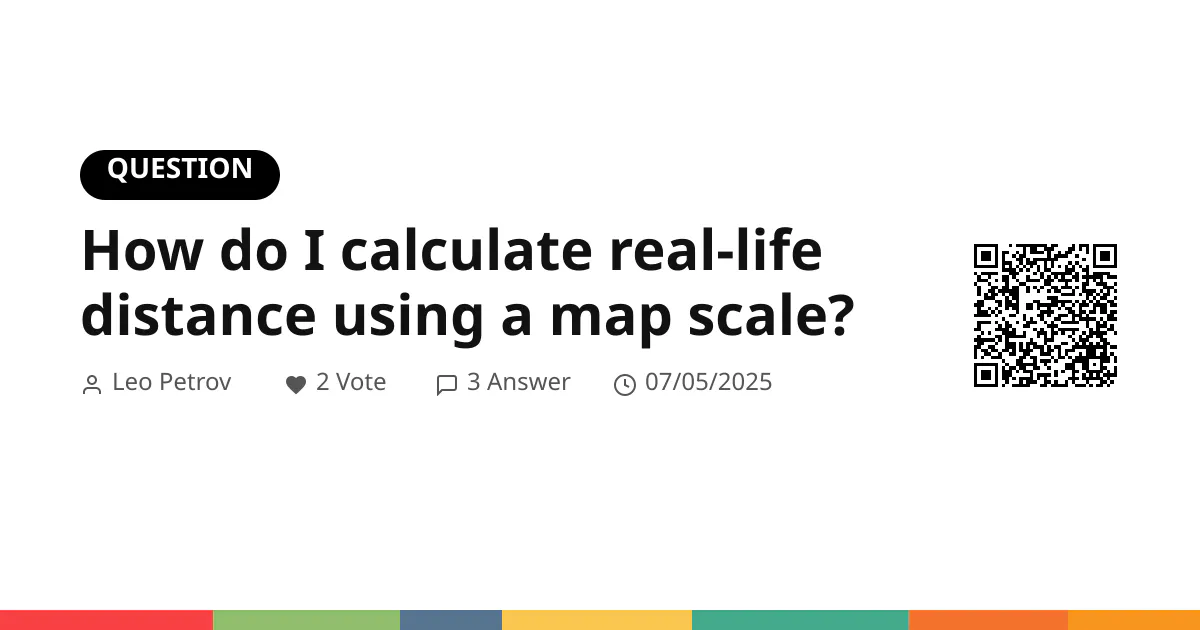
How do I calculate real-life distance using a map scale?
I'm stuck on a homework problem and I think I'm overthinking it. The question is:
A map has a scale of 1cm : 10km. If the distance between two towns on the map is 5.5cm, what is the real-life distance between them?
I'm not sure if I'm supposed to set up a ratio or just multiply. Can someone walk me through the steps? I want to understand the method, not just get the answer.
3 Answers
Hi @Leo_Petrov, you're right, it's a straightforward multiplication problem once you understand what the scale means. Here's the simplest way to think about it:
The map scale 1cm : 10km is a conversion factor. It means "for every 1 centimeter on the map, it represents 10 kilometers in real life."
So, if you have a distance of 5.5cm on the map, you just need to multiply that by the scale factor:
Real Distance = (Map Distance) x (Scale Factor)
Real Distance = 5.5 cm * 10 km/cm
Notice how the 'cm' units cancel out, leaving you with 'km'.
Real Distance = 5.5 * 10 km
Real Distance = 55 km
So the two towns are 55 kilometers apart in real life.
While direct multiplication works for this problem, it's also helpful to know how to set it up as a proportion. This method is more versatile for complex problems.
You can set up two fractions (a ratio) and make them equal to each other:
(Map Distance 1 / Real Distance 1) = (Map Distance 2 / Real Distance 2)
Plug in your known values:
(1 cm / 10 km) = (5.5 cm / x km)
Now you can cross-multiply:
1 * x = 10 * 5.5
x = 55
So, the real distance (x) is 55 km. This method is really useful when you're given the real distance and need to find the map distance.
The other answers are spot on. One piece of advice for the future: always pay close attention to the units.
In this problem, the scale is conveniently given as cm to km. Sometimes, a map scale will be given as a unitless ratio, like 1 : 100,000. This means 1 unit on the map is 100,000 of the *same unit* in real life. So, 1 cm on the map would equal 100,000 cm in reality, which you would then need to convert to kilometers (by dividing by 100,000) to get 1 km.
Your problem is simpler, but it's a good habit to always check if you need to do a unit conversion.